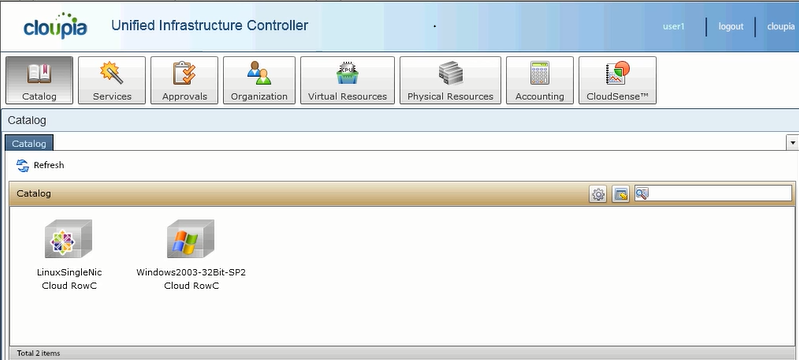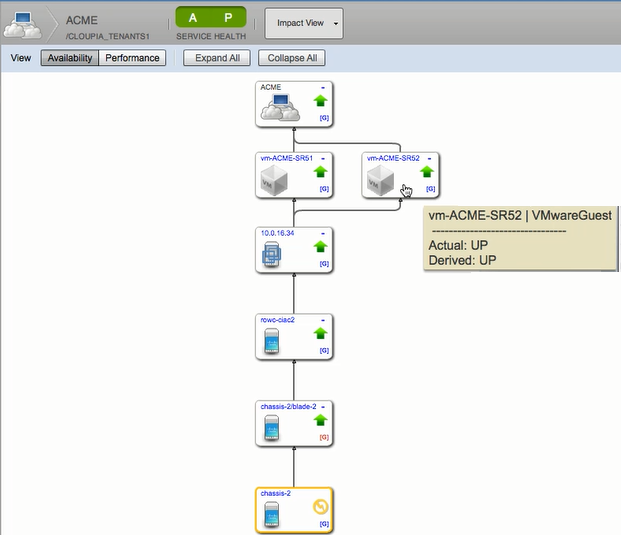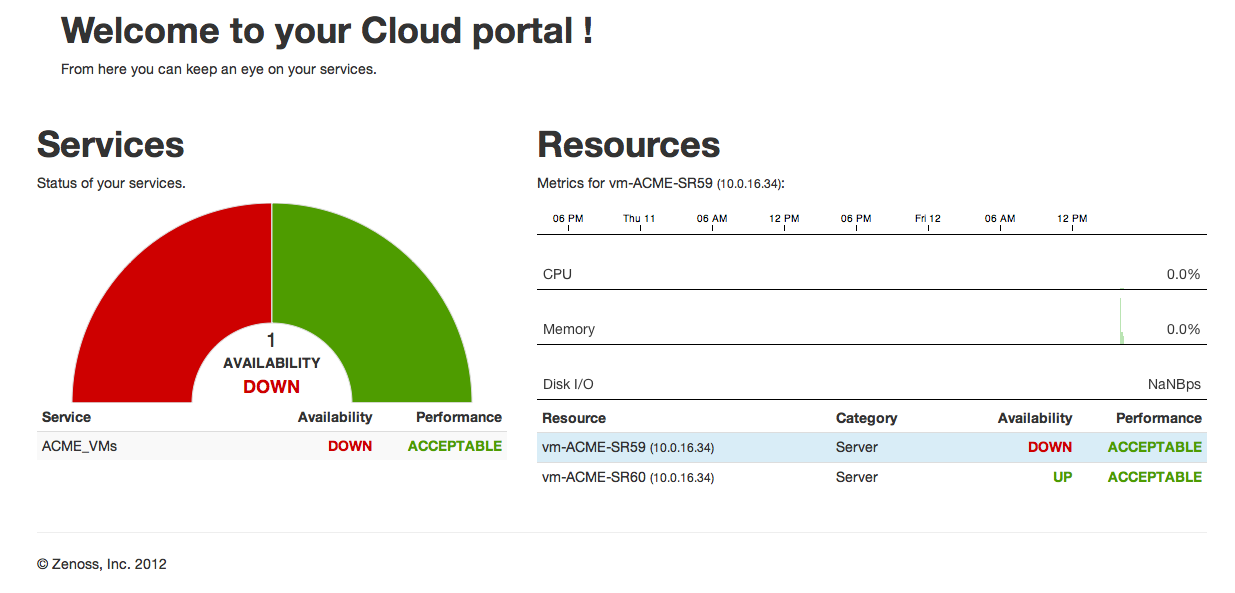UCS Director with Zenoss Delivers Automated Provisioning and Service Assurance
When the number one reason that CIOs choose converged infrastructure turns out to be “more agility” then it’s time for smart IT managers to figure out how to move to orchestrated provisioning. After all, Cisco reports that nearly 75% of staff time is spent configuring, deploying, and managing infrastructure assets.
Cisco’s UCS Director (formerly Cloupia) delivers capabilities to provision and manage converged infrastructure from a single piece of glass. It works equally well with Cisco UCS, VCE Vblock Systems, EMC VSPEX infrastructure, and the NetApp FlexPod platform. With UCS Director, organizations configure and provision physical and virtual network, storage, and compute resources.
The UCS Director console enables departments to self-provision VMs
One great feature of UCS Director is its ability to define User Groups. A user group is a budget and policy boundary (think “department”) defining shared resource, policies, and cost models. Since IT sets the limits and policies, users can be entrusted to self-provision their own virtual machines.
We configured Zenoss Cloud Service Assurance to follow along automatically with the UCS Director self-provisioning process. Zenoss adds critical function to a converged infrastructure deployment – the ability to precisely identify which department was affected by an outage or hot spot in the shared infrastructure and isolate an issue’s most probable root cause. When users are self-provisioning, then nobody in IT really knows which infrastructure is supporting their VMs. The Zenoss impact capability directly addresses this scary situation.
Creating automatic service assurance following automated provisioning turned out to be incredibly easy.
Zenoss already automatically discovers new virtual machines and hosts, storage LUNs and file systems, and virtual network services like VLANs and maps relationships among these. The Zenoss service impact function gives us the impact assessment and root cause analysis we want if we can just identify which VMs go with each UCS Director User Group.
Zenoss tracks VMs newly created by Cloupia. Note how each VM event includes the department name ‘ACME’.
Fortunately, UCS Director can provide that information built in to the name of each VM. As every IT person knows, naming standards are your friend – and UCS Director generates VM names that conform to a policy. We used the default naming standard policy including the User Group name as part of each VM name.
Our Zenoss workflow was straightforward from there. We set up a trigger that matched the newly added VM event and used it to start a shell script. The shell script called standard Zenoss orchestration APIs, creating a user group service, defining an appropriate impact policy, and adding the new VM to the service.
The ACME service in Zenoss shows two VMs added by UCS Director and their supporting infrastructure components
Handling removed VMs was even easier, as Zenoss automatically removes these from user group services. We handled the “remove user group” use case with a second trigger based on UCS Director audit events.
We tested end user control of VMs in UCS Director, powering off a virtual machine and checking that Zenoss tracked status properly.
Cloupia allows departments to control their own VMs
Of course Zenoss noted that the VM was no longer powered on and updated the status of the user group service as well. Earlier I mentioned that we had built an impact policy for the service. We chose to represent the service as Up when all the VMs are working, Down when all the VMs are down, and At Risk when a single VM is down. At Risk is an intermediate state between Up and Down.
A single service for all UCS Director-deployed assets identifies a single powered-off VM and the departmental service At Risk.
We also set up the Zenoss Tenant Portal, giving the user group administrator additional visibility into the performance of their infrastructure resources. The Tenant Portal shows detailed metric graphs for each VM and overall performance and availability status for the user group resources as a whole.
The Zenoss Tenant Portal can be customized to meet different requirements
From conception to working prototype – including installation of UCS Director and Zenoss – took us less than a week. The results illustrate several of the reasons why people are choosing Cisco converged infrastructures.
-
Fast time-to-value with pre-validated solutions
-
Agility improvements based on rapid VM self-provisioning
-
Manageable complexity with orchestrated policies
-
Single pane of glass converged management for converged infrastructure
-
Simple user-request-to-daily-operations integration
For more information about Zenoss Cloud Service Assurance, visit the product page at http://www.cisco.com/go/cloudassurance.
For immediate help, contact a Zenoss sales specialist or your Cisco reseller.












